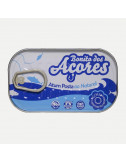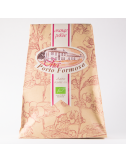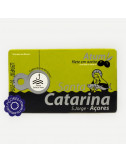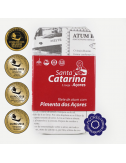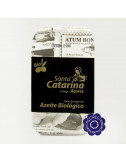
EASTERN GROUP
SANTA MARIA
[36° 58' 14" N, 25° 06' 18" W]
The Island of Santa Maria is located in the southeast extreme of the Archipelago of the Azores, around 100km south of São Miguel and about 600km away from the Island of Flores. Therefore, it is the most eastern and meridional Island of the archipelago. It has a 97,4 km² area and a resident population of 5 578 (2001), distributed through the five parishes that make up the municipality of Vila do Porto, the only in the Island.
Geologicaly speaking, it is the oldest Island of the Azores, with formations that go beyound 8,12 million years of age, making it of a more remote volcanism. This comparatively old age gives it maturity to the soils and explains the presence of extense sedimentary origin formations where one can find marine fossils.
The naturals and inhabitants of Santa Maria are called “marienses”.
***
SÃO MIGUEL
[37° 47' N, 25° 30' W]
São Miguel is the largest of the islands of the Archipelago of the Azores and the largest of the islands belonging to Portuguese territory. With an area of 746,82 km2, it ranges 64,7km length and varies between 8 to 15km width. It has a population of 131 609 habitantes (2001) and it is made up of the municipalities of Lagoa, Nordeste, Ponta Delgada, Povoação, Ribeira Grande and Vila Franca do Campo.
The Island, subject to sysmic activity, presents itself with a mountainous terrain, mainly in its inland, dominated by Pico da Vara, and indented by valleys, grotas and ribeiras (small rivers) – which are the only courses of water. Its volcanic origins is present in the tipology of the rocks and the biscoitos* terrains and mistérios** - typical of the archipelago – and permanent sulfurous fumaroles, such as the ones in Vale das Furnas and in Ribeira Grande. The bottoms of craters of extinct volcanoes now serve as beds to lagoons, such as Lagoa das Sete Cidades, Lagoa do Fogo and Lagoa das Furnas. This combination of factors provides for the mineral and medicinal reputation of the waters from Vale das Furnas.
The naturals and inhabitants of São Miguel are called “micaelenses”.
* - Biscoito is the name given in the Azores to the volcanic breccia terrains and the recent lava fields, which is also the name of the parish of Biscoitos, in the island of Terceira, and of numerous places in almost every island of the Archipelago.
** - Mistérios is the name given in the Azores to the terrains of strung and spongy lava formations, where moss and grass proliferate, being it also the name of several locations of the island of Pico.



